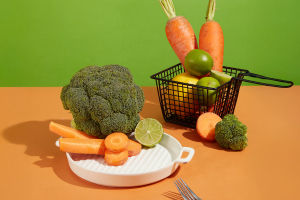Choosing Camera Settings
When we begin our photography journey, choosing the right camera and settings can feel overwhelming. But don't worry, Lykkers!
In this guide, we'll walk through the most important factors to consider when selecting camera settings, ensuring you can make an informed decision and confidently start snapping photos.
Buying Your First Camera? 6 Things To Consider When Choosing Photography Gear
Video by Allison Anderson
Select Your Camera Type
Before diving into the camera settings, we need to figure out which type of camera fits our needs. There are three main types to choose from: DSLR, mirrorless, and compact digital cameras. Each comes with its own advantages and drawbacks.
• DSLRs are perfect for those looking for a more professional, customizable experience, offering great lens options and image quality.
• Mirrorless cameras are newer and more compact, often providing similar image quality to DSLRs, but with faster autofocus and lighter weight.
• Compact cameras are portable, simple, and usually cheaper, but they may not offer the same quality or flexibility as the other two.
Think about your photography goals, the budget you're comfortable with, and the level of control you want over your photos when deciding on the type of camera to buy.
Choose the Right Sensor Size and Megapixels
Two key factors most people consider when buying a camera are the sensor size and megapixels.
Sensor Size: This refers to the size of the sensor inside your camera that captures the image. The larger the sensor, the more light it can capture, which leads to clearer, more detailed images—especially in low-light conditions. For beginners, a crop sensor (such as APS-C or Micro Four Thirds) is more than enough for everyday shooting.
Megapixels: This is often the first thing people look at when purchasing a camera, but it's not as crucial as it may seem. While higher megapixels mean more detailed images, too many can actually create more noise, especially in low-light situations. For most beginners, around 15-20 megapixels should be sufficient, as this will give you detailed shots without sacrificing quality.
Lens Selection: What to Look For
Lenses play a huge role in your photography. Choosing the right lens can completely change the way you capture images, so it's important to pay attention to a few key features.
• Focal Length: This determines how much zoom your lens has. A wide-angle lens (short focal length) is great for landscapes or architecture, while a telephoto lens (long focal length) is ideal for portraits or wildlife.
• Aperture: A larger aperture (represented by a smaller f-number, like f/1.8) allows more light into the camera, making it easier to shoot in low-light conditions and giving a beautiful blurred background effect (bokeh).
• Lens Type: Stick with kit lenses or brand-specific lenses when you're starting. These lenses are designed for your camera and provide solid performance without breaking the bank.
Other Important Camera Features
There are other camera features that can make a big difference, especially once we get more comfortable with photography.
• ISO: This controls your camera's sensitivity to light. A higher ISO is useful for low-light conditions, but too high can result in noisy images. As a beginner, aim for lower ISO settings (100-800) unless you're shooting in dim environments.
• Shutter Speed: This controls how long the camera's shutter stays open to let in light. A fast shutter speed (like 1/1000) is ideal for freezing motion, while slower speeds (like 1/30) create a blur effect for moving subjects.
• Autofocus Speed: A fast autofocus system will help you quickly capture those perfect moments, so look for cameras with good autofocus for smoother shots, especially if you plan to shoot action or wildlife.
Conclusion: Start Your Photography Journey with Confidence
At the end of the day, picking the right camera settings is about understanding what suits your style and needs. There's no perfect camera, but by focusing on a few key features like sensor size, lens selection, and autofocus speed, we can ensure we're getting the best gear for our budget and skill level. With the right tools in hand, Lykkers, we're all set to dive into the exciting world of photography and capture some amazing shots.
So, what are you waiting for? Choose your camera, get those settings right, and let the photography adventures begin!
-
 Ginger Lemon HoneyTired of Getting Sick? This Ginger Lemon Honey Tea Is the Natural Cold Remedy You’ll Want Every Single Day!
Ginger Lemon HoneyTired of Getting Sick? This Ginger Lemon Honey Tea Is the Natural Cold Remedy You’ll Want Every Single Day! -
 Realistic Movie PropsThe Art of Fake: How Movie Props Fool Your Eyes
Realistic Movie PropsThe Art of Fake: How Movie Props Fool Your Eyes -
 Smooth Creamy DelightOnly 5 Minutes to This Smooth Creamy Delight—The Banana Avocado Drink Everyone's Talking About!
Smooth Creamy DelightOnly 5 Minutes to This Smooth Creamy Delight—The Banana Avocado Drink Everyone's Talking About!
Copyright © zogu 2021 - 2025. All Right Reserved.